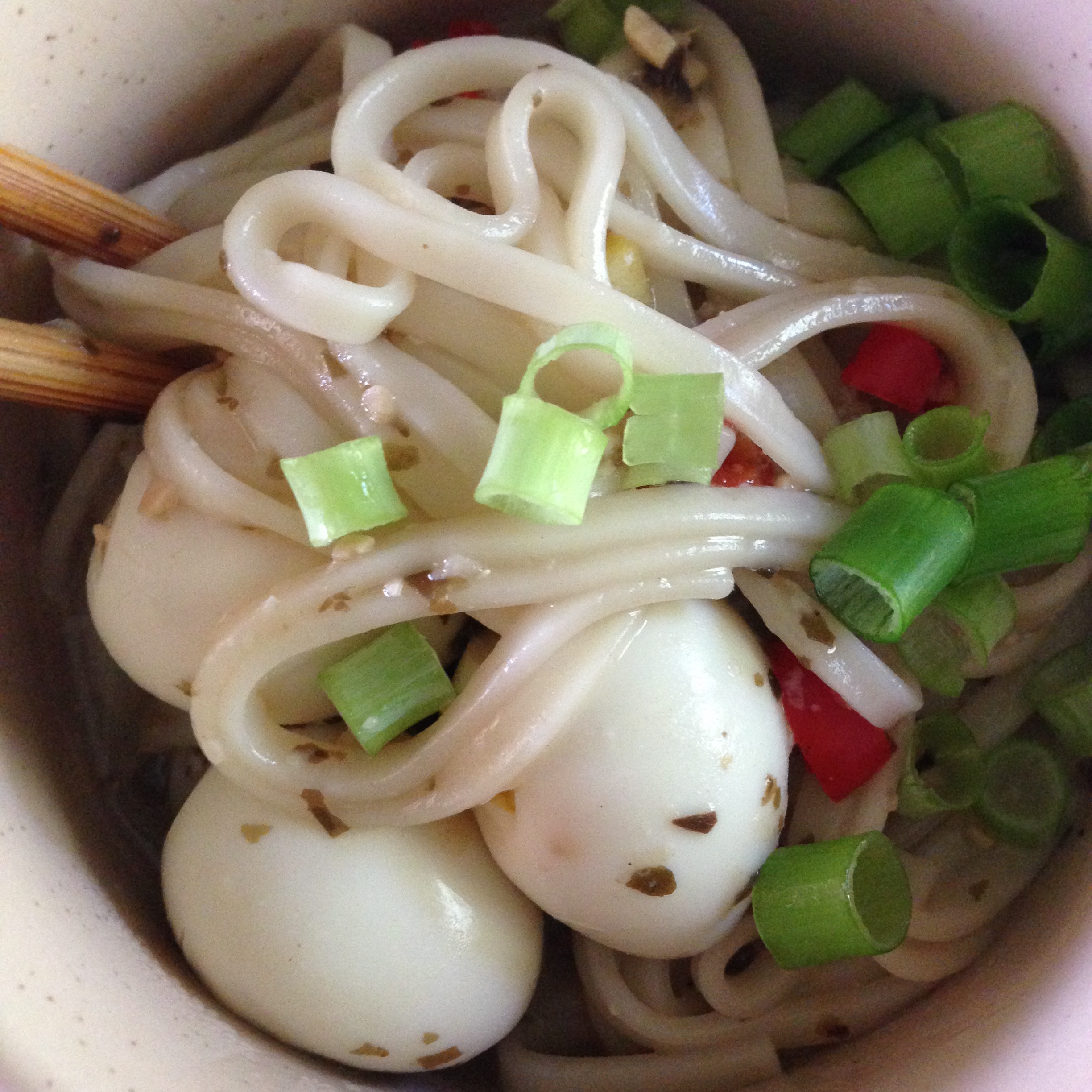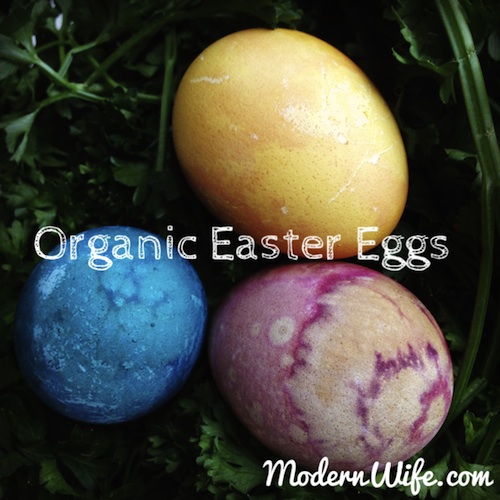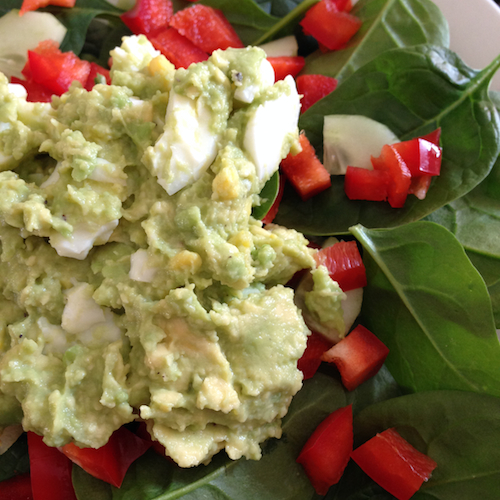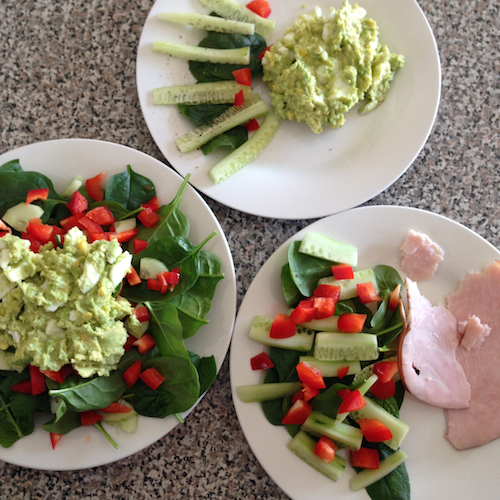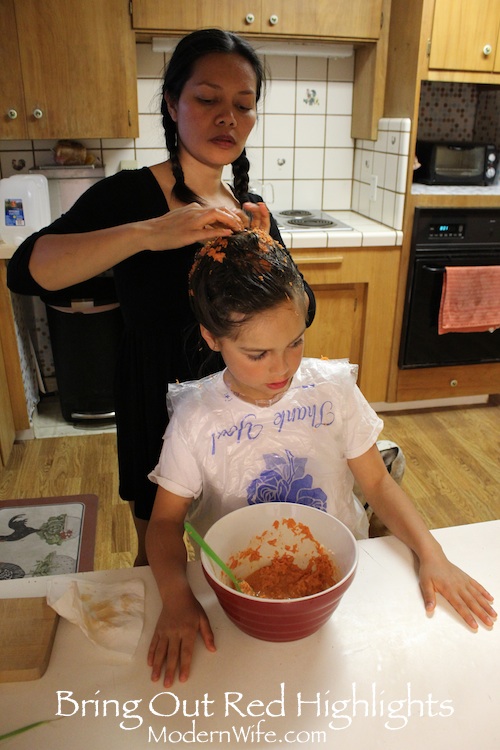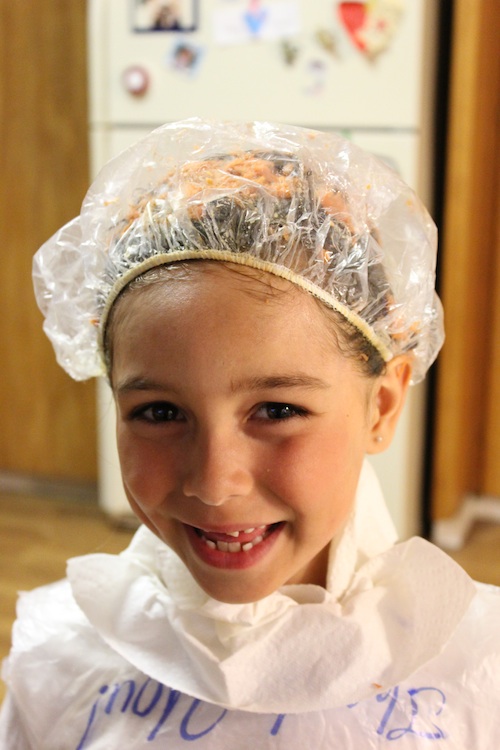Overnight it seemed, these giant puffball mushrooms sprouted in our backyard. We spotted them in autumn last year and let them grow till they popped into greenish brown powdery spores. Cute, then gross. This year, we found a bunch of them in the same spot. I wondered if they were edible. Google said yes. And it has been found to contain a mucoprotein called calvacin, which is a potent antitumor agent, but becomes toxic with prolonged use. Once a year, though, and eating it as close to nature as possible instead of ingesting a distilled version? I’m willing to give it a try.
So we plucked one out, inspected it to make sure it really was a Calvatia gigantea, and rinsed the dirt off.

Cut off the bottom. This picture shows a couple of the defining characteristics of a Calvatia gigantea: no stem and no gills.

Slice it up. Some people slice off the outer layer and wind up with a block. We just sliced it. As you can see, we picked it early enough in its development stages. The inside is still white and perfect. Do not eat if there are spores.

Store and refrigerate the rest.

Some organic extra virgin coconut oil on the cast iron griddle over medium low. Throw in a sliced onion and cook until glassy. I mixed equal parts safflower oil and soy sauce, some salt and pepper to taste, garlic powder, pinch of cayenne, dipped the giant puffball mushroom slice both sides and cooked it.

Cut it up into strips and serve it up. It would make an amazing addition to stir fry vegetables. The mushroom flavor is subtle and takes on seasonings really well. The texture is soft and smooth against the tongue. I love it!

Also great dipped in a beaten egg and French Toasted.
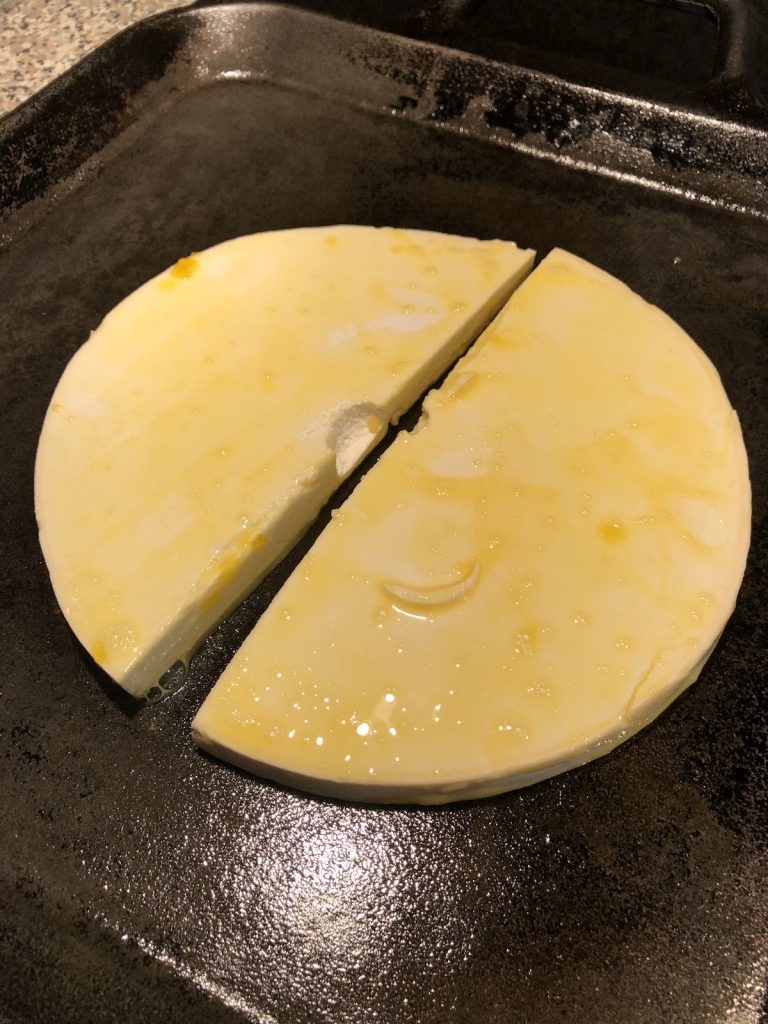
Gluten-free French Toast Giant Puffball Mushroom with maple syrup drizzled on top and fruit on the side.

Have you ever eaten a Giant Puffball Mushroom? Got any recipes to share? Scroll below to comment. Thank you!


